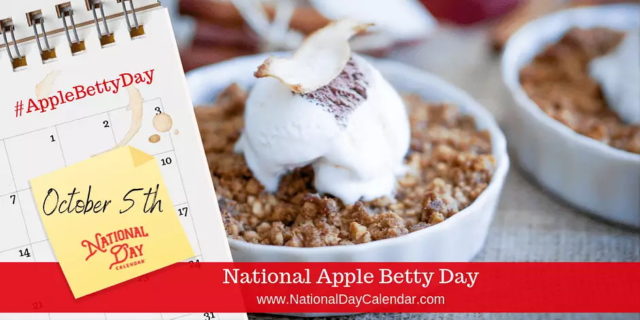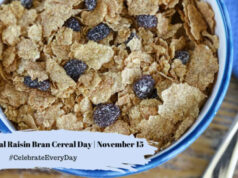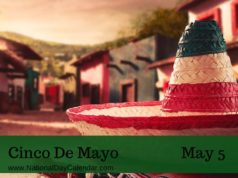
On October 5, fall ushers in National Apple Betty Day with a sweet aroma of apples baked in cinnamon and oats.
Similar to what is known as apple crisp, crumble or cobbler, the American variant known as the Betty or Brown Betty dates from colonial times. Most Apple Betty recipes call for cinnamon, sugar and butter to make the crumbs that top sliced apples. Sometimes oats or flour are added, too.
- Apple Brown Betty was one of the favorite desserts of Ronald and Nancy Reagan in the White House.
- A Betty consists of fruit, most commonly apples, baked between layers of buttered crumbs. Betties are an English pudding dessert closely related to the French apple charlotte. Betty was a popular baked pudding made during colonial times in America.
- The name seems to have first appeared in print in 1864 when an article in the Yale Literary Magazine listed it (in quotation marks, implying that it was not then a fully established term) with tea, coffee, and pies as things to be given up during ‘training’. That author gave brown in lower case and Betty in upper case: and, in default of evidence to the contrary, it seems best to go along with the view that Betty is here a proper name.
- Brown Betty (1890) – This recipe was part of the winning essay for the $500 American Public health Association Lomb prize on practical, Sanitary, and Economic Cooking Adapted to Persons of Moderate and Small Means, which became a book of the same title by Mrs. Mary Hinman Abel.
- It was part of a series of menus to feed a family on thirteen cents a day. Mrs. Abel may have carried the recipe into use in the New England Kitchen, an experimental Boston restaurant aimed at “improving” the food choices of the poor.
- The apple is the pomaceous fruit of the apple tree, species Malus domestica in the rose family (Rosaceae).
- The story behind this classic dessert is somewhat nebulous. The Oxford Companion to Food deduced that there was in fact a real “Betty” of African-American descent for which the dish is named. It is believed that “brown” wasn’t referring to the dish, but to the cook herself, who may have been of mixed racial background.
- During colonial times it was common to name desserts after people, and there is further speculation that this Betty might have been a slave. The recipe, made from Granny Smith apples, lemon juice, sugar, sandwich bread, butter, cinnamon, and brown sugar, was first published in the Yale Literary Magazine as “brown Betty” in 1864.
- Apple betty and apple brown betty are probably the two most famous names in cobbler-terminology, both of these turning up in “Yankee” cookbooks in the early to mid-1900s. The recipes for these cobblers have a topping made of breadcrumbs (as in stale French bread breadcrumbs) along with the usual sugar, (maybe) cinnamon, and butter.
- The common understanding of a betty seems to be as a baked pudding containing apples and topped with a breadcrumb mixture. This would make the apple betty the English version of the French apple Charlette, which becomes in America the apple charlotte. The charlotte (also called a charlotte brown) is “a dish of apple marmalade covered in crumbs of toasted bread”, and appears quite early in American English print, in a 1796 New York Magazine.
- The apple is the pomaceous fruit of the apple tree, species Malus domestica in the rose family (Rosaceae).
- It is one of the most widely cultivated tree fruits, and the most widely known of the many members of genus Malus that are used by humans.
- Apples grow on small, deciduous trees.
- The tree originated in Western Asia, where its wild ancestor, Malus sieversii, is still found today.
- Apples have been grown for thousands of years in Asia and Europe, and were brought to North America by European colonists.
Sources:












